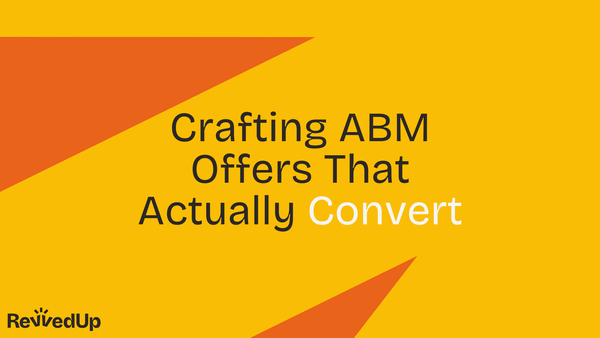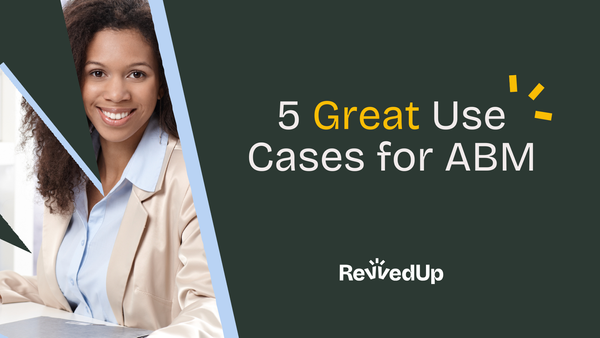Are Cold Emails More Like Brand Marketing These Days?

I just wrapped up my monthly Office Hours with Mark Colgan, and as always it was packed with fresh insights and practical frameworks. If you didn’t make it, you can view the whole recording here... or skip to the key take-aways below!
I just wrapped up my monthly Office Hours with Mark Colgan, and as always it was packed with fresh insights and practical frameworks. If you didn’t make it, you can view the whole recording here... or skip to the key take-aways below!
1. Rethink Cold Email as Your “Private Ad Network”
Most of us still treat cold outreach like a direct-response channel: 3-4 emails over 10-12 days, hope for a response, then move on. But what if cold email isn’t direct response anymore, but actually a form of brand marketing?
- Extended Cadence: Instead of 3-4 touches in 10-12 days driving to an immediate call, plan 8–12 educational touches over 3–6 months.
- Multi-Channel Mix: Rotate between email, LinkedIn messages, phone voicemails, and even handwritten notes.
- Narrative Arc: Each touch builds on the last—first you educate, then tease an insight, then make a low friction ask.
Billboard Analogy: You wouldn’t run one billboard for three days and pull it when sales don’t spike. When it comes to ABM, you really should commit for months, compounding your message until awareness, interest, and pipeline all rise together.
Treat each inbox like ad real estate you own—if your deliverability is good—and commit to a sustained campaign rather than expecting an instant reply.
2. The Under-85-Word Email Framework
Brevity forces clarity. Mark and I drilled into an Observation → Problem → Solution → Call-to-Action structure that consistently hits under 85 words:
- Observation (20 words max)
- Problem (15–20 words)
- Solution (20–25 words)
- Call-to-Action (10–15 words)
Example send:
“Hi [Name], saw you hired two AEs in Q1—ramp times are stretching to six months. We’ve built a bespoke onboarding playbook that cuts that to four weeks. Would you be up for a 2-minute Loom walkthrough?”
Pro tips:
- PS for social proof: “PS: Client A reduced ramp from six to four weeks using this playbook.”
- Video invite: “Can I shoot you a quick Loom to show how this would work for you?” always beats a vague “hop on a call” ask.
3. Offer Value Upfront with Ideas or Provocative Questions
If you’re consulting, running an agency, or offering fractional services, your expertise is the “product.” Two ways to break through the noise:
A. Hand-Crafted Creative Ideas
Spend 5–10 minutes researching your prospect’s digital footprint. Then lead with a micro-audit:
- “I noticed seven broken links on your blog—can I send you a mini-report of exactly where they are?”
- “Looks like you’re selling x to y. Have you considered [unique approach] to earn their attention?”
Include solutions or suggestions in the body of the email so you’re not stringing them along. Then you’ve earned trust before they even respond.
B. Provocative Discovery Questions
Ask questions that make prospects think differently:
“Which of your competitors is doing this better—and why?”
“What would happen if you over-invested in solving this?”
“Why hasn’t someone solved this for you already?”
“What’s the one thing holding you back from hitting your next milestone?”
These types of questions can surface hidden pain and position you as a thought partner—prospects will want to keep talking.
4. Frame Everything Through the Value Equation
Alex Hormozi’s formula helps craft offers that feel irresistible:
Value = (Dream Outcome × Perceived Likelihood) ÷ (Time Delay × Effort & Sacrifice)
- Dream Outcome: Be specific—“10 qualified meetings in 30 days,” not “more pipeline.”
- Perceived Likelihood: Back it with proof—case studies, testimonials, or a sneak-peek idea.
- Time Delay: Promise quick wins—“warm inbox in 7 days,” not “two-month ramp.”
- Effort & Sacrifice: Make it frictionless—“we handle setup in under an hour; no IT support needed.”
Just be careful of overselling the dream outcome or reduction the friction to the point it feels implausible.
Better to acknowledge the baseline (e.g. “cold email usually takes two weeks to warm up”) then show how you shave that down to 7–10 days, backed by evidence. This makes your offer both credible and compelling.
5. Build a Lean, Use-Case-Driven Tech Stack
Forget chasing the mythical all-in-one platform. Your stack should mirror your specific workflow:
- Define Your Use Case: Selling into enterprise fintech? Pull funding data from Crunchbase.
- Pick Best-of-Breed Tools: Use BuiltWith for tech-stack insights or ZoomInfo for contact lists.
- Enrich Only What Matters: Append fields that fuel personalization—recent funding rounds, employee growth.
- Automate Lightly: A simple Zapier flow can push new Crunchbase alerts into your engagement tool in minutes.
Start with one or two point solutions, then migrate to a unified platform when your volume and needs truly demand it.
6. Keep Humans in the Loop
AI is great for research, initial drafts, and data enrichment—but real human interaction still wins high-value deals:
- Top-of-Funnel: AI handles list creation, enrichment, and content creation (based on human guidelines).
- Mid-Funnel: Swap in a personal Loom video or a LinkedIn voice note referencing a recent insight.
- Bottom-Funnel: Have a senior rep review AI output, add bespoke anecdotes, then lead discovery calls.
As much as automation can scale, buyers making serious investments still want a trusted human to guide the conversation.
Conclusion: Play the Long Game
Cold outreach in 2025 isn’t about secret subject lines or hacking the spam filter—it’s about combining brand-style consistency, direct-response precision, and a human touch. By:
- Treating inboxes as your private ad network
- Crafting ultra-concise, problem-driven emails
- Delivering value upfront with mini-audits or sharp questions
- Framing offers through the value equation
- Choosing a lean, use-case stack that scales
- And keeping humans at critical touchpoints
…you’ll transform “cold” outreach into a warm, sustainable growth engine that fills your pipeline month after month.
Ready to shift from one-and-done blasts to a compound-interest approach?
Let’s rev up your ABM strategy…




